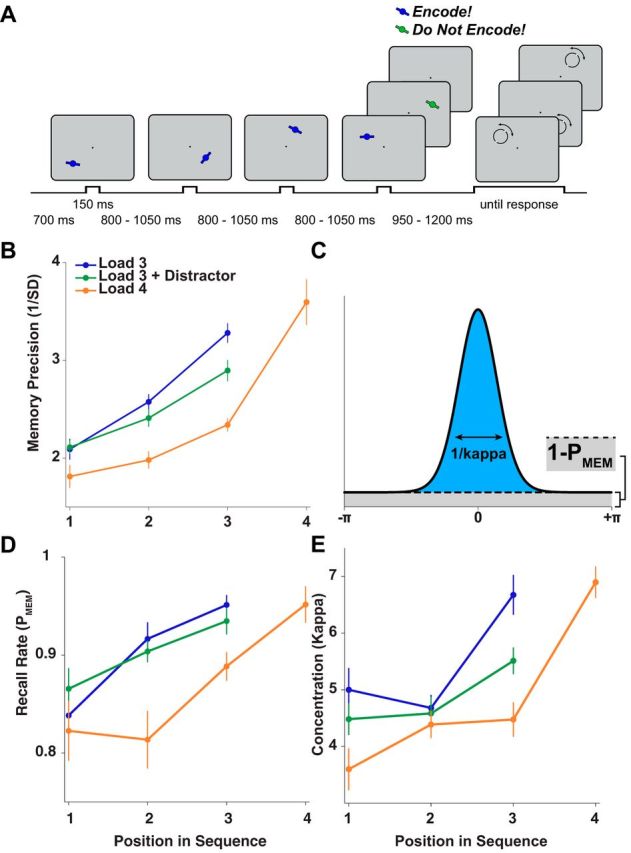Figure 1.

Design and behavioral results of the sequential WM task. A, Observers saw a temporally jittered sequence of at least three oriented bars presented at different locations on the screen. On 70% of trials, a fourth bar appeared and could be either task relevant (blue, bottom row, probed in 25% of four-target trials) or task-irrelevant (green, middle row, never probed). Colors were counterbalanced across sessions. After a variable delay, a probe circle appeared at the location of one memory item. Observers indicated that item's orientation by moving indicator dots. After the response, the stimulus reappeared over the indicator dots as feedback (data not shown here). B, The precision of the response distribution (i.e., the inverse of the circular SD) showed a robust recency effect for each condition. In addition, participants performed better on load 3 trials than on trials with a distractor or with a fourth relevant item. C, Schematic of response distribution consisting of a mixture of two underlying components: a uniform distribution driven by random guesses with height 1 − PMEM (gray shading) and a von Mises distribution driven by noisy recall with concentration κ (blue shading). D, E, Results of mixture-model fitting. We decomposed response distributions separately for each participant and condition, estimating the concentration (κ) of the von Mises distribution and the recall rate (PMEM) for each. D, Recall rates increased for items presented later in the trial and were higher on Load 3 and Load 3+D trials relative to Load 4. E, Kappa also increased as a function of item position in the trial sequence and decreased as a function of load, with Load 3+D and Load 4 showing lower precision than Load 3.
